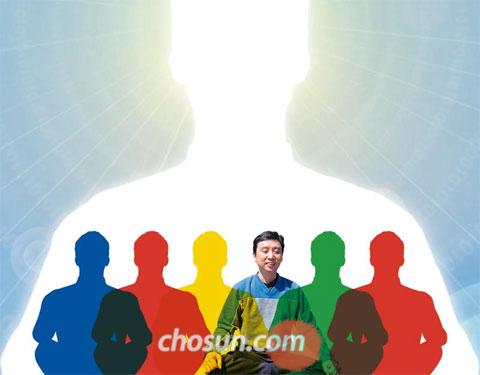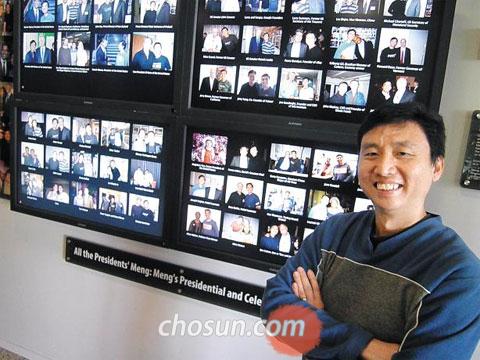위자드웍스가 흥미로운 일을 하고 있었네요.
(Full version 포스터를 보시려면 위 이미지를 클릭하세요!)
안녕하세요!
3월 개강을 맞이하여 위자드웍스에서 5년만에 대학생 서포터즈 프로그램 '위자드웍스 마법학교' 신입생 모집 소식을 들고 찾아왔습니다.
5년 전 무려 400:1을 경쟁률을 기록할 만큼 당시 최고의 대학생 참여 프로그램으로 기억되는 위자드웍스의 ‘호그와트 마법학교’가 2013년 3월 ‘위자드웍스 마법학교’로 이름을 바꾸고 새 친구들을 기다립니다.
그동안 호그와트 마법학교를 거쳐 간 멘토들과 졸업생들은 현재 Google, Microsoft, 삼성전자, LG전자, SK텔레콤, NHN, Daum 등 국내·외 유수 기업에서 활발한 활동을 펼치고 있습니다.
특히 이번에 모집하는 ‘위자드웍스 마법학교 4기’는 한 분씩 따로 만나기도 힘든 국내 최고의 멘토진들을 만날 수 있는 값진 멘토링 프로그램을 마련했습니다.
또한 이제는 각기 주요 기업에 입사한 호그와트 선배들과 함께하는 선배 멘토링도 준비되어, 기업의 홍보만을 주로 하는 여타 대외활동에서는 얻을 수 없는 진정한 삶의 배움과 경험들을 얻을 수 있으리라 확신합니다.
그럼 톡톡 튀고 열정 넘치는 대학생 여러분의 많은 지원 바랍니다. 3기 종료 후 4년이 지난 지금까지도 네이버 ‘대학생 대외활동’ 검색순위 Top 5에 들고 있는 감동의 대학생 프로그램 ‘호그와트 마법학교’가 돌아옵니다.
여러분의 4년간의 기다림에 부응하는 최고의 프로그램으로 보답하겠습니다.
감사합니다!
—-
<위자드웍스 마법학교 4기 멘토단 소개>
이택경
프라이머 대표
포털사이트 Daum 공동창업
Daum의 CTO로 13년간 재직 후
현재 20여개 벤처기업 육성하며 활발히 후진 양성중
Mickey Kim (김현유)
Google 본사 상무
국내 대학 인문학도 출신으로
35세에 구글 본사 한국인 최연소 상무가 되다.
베스트셀러 <꿈을 설계하는 힘> 저자
박지웅
패스트트랙아시아 대표
벤처캐피털 업계 최연소 심사역 출신으로
인터넷/모바일 20여개 회사에 300억 투자 리딩
초기 투자한 티켓몬스터가 3천억 규모로 M&A
표철민
위자드웍스 대표
중3 때 첫 창업 후 3전 4기 끝에
솜노트를 들고 돌아온 29세 13년 차 CEO
美 BusinessWeek <아시아를 대표하는 젊은 기업자 25인> 선정
그 외에도 깜짝(!) 놀랄 멘토들이 마법학교를 찾아옵니다.
—-
<위자드웍스 마법학교 4기 모집 안내>
1. 모집요강
지원자격 : 국내∙외 대학교에 재학(또는 휴학) 중인 대학생
전공 무관. 서울 및 수도권 거주자에 한함
* 오프라인 활동 및 뒤풀이 모임 참석 가능자
모집인원 : 총 50명
* 개인 또는 팀을 구성하여 지원 가능하며, 팀당 구성인원은 최대 4인으로 제한
(팀원 전체의 능력과 팀웍이 뛰어나면 팀 지원이 유리하지만 단순히 친하다는 이유로 팀으로 지원시에는 오히려 팀 내 유능한 친구조차 탈락할 수 있으므로 잘 고민하여 지원해 주세요.)
우대능력 : 1) 카카오톡 대화방을 오른쪽으로 넘기면 들어가 있는 솜노트∙솜투두 앱에 대한 이해 2) 스마트폰 및 SNS를 활발히 사용하는 사용자 3) 남부럽지 않은 열정과 똘끼의 소유자 4) 스펙이 아닌 경험, 인맥이 아닌 친구를 만들고자 하는 뜨거운 사람들을 선호함
지원기간 : 2013년 3월 11일 (월) ~ 3월 26일 (화) 오후 6시
지원방법 : 위자드웍스 홈페이지나 솜클라우드 페이스북 페이지 내 마법학교 지원서 다운로드 및 작성 후 school@wzd.com 으로 이메일 접수
(접수시 메일 제목은 개인 지원의 경우 ‘[개인] 한국대 홍길동’ 형태로, 팀의 경우 ‘[팀] 우리가짱이다’ 형태로 해주세요.)
전형일정 : 서류합격자 개별 연락. 3월 마지막주 면접 진행 예정
입학식 : 4월 초 입학 예정. 입학식 불참시 합격이 취소됩니다.
※ 지원서 다운로드 링크
개인 지원서 : http://bit.ly/XYWu7G
팀 지원서 : http://bit.ly/VOxGAF
2. 활동안내
활동내용 :
1) 위자드웍스의 대표 제품 솜노트∙솜투두의 캠퍼스별 소개 활동
2) 추후 위자드웍스에서 출시될 서비스들에 대한 선체험 및 제품 피드백
3) 솜클라우드 브랜드 마케팅 아이디어 제안
활동기간 : 2013년 4월 초 ~ 7월 초 (3개월)
* 마법학교 정기 일정은 시험기간을 제외한 매주 금요일 저녁 예정
활동혜택 :
1) 수료자 전원에게 위자드웍스 마법학교 인턴쉽 수료증 수여
2) 최우수자 2인에게 위자드웍스 본사 정식 인턴쉽 기회 부여
3) 국내 최고 수준 멘토들의 특별 강연 초대
4) 마법학교 멘토들과의 1:1 멘토링 프로그램 참여
5) 위자드웍스 본사 행사 우선 초청
6) 캠퍼스별 이벤트 비용 지원
7) 우수자 특전 포상
* 진한 추억과 함께 기억되는 마법학교 4기 멤버들
3. 지원 관련 문의
마법학교 모집과 관련된 모든 궁금증은 아래로 문의해 주세요.
이메일 : school@wzd.com
페이스북 : facebook.com/somcloud
트위터 : @somcloud
—-
"위자드웍스 마법학교가 신입생을 뽑지 않는 지난 4년 동안에도 네이버 검색 순위에 계속 올라 있을만큼 인기를 끌었던 것은 마법학교의 초기 설립 모토가 ‘사람을 남기는 대학생 프로그램’이었기 때문입니다. 그만큼 함께 활동하는 멘토들, 동료들과의 끈끈한 우정에 모든 초점을 맞추고 있는 프로그램인만큼 믿음으로 참여하셔도 좋습니다. 제가 할 수 있는 한 최선의 노력으로 회사는 물론 참여하는 학생들의 삶에 실질적인 도움이 되는 프로그램이 될 수 있도록 하겠습니다.”
- 위자드웍스 CEO 표철민
'Gurus,Google,Apple,... > 꿈,학습,성장' 카테고리의 다른 글
| 어린이 쥬니어 SW 프로그래밍 언어 교육 (0) | 2013.08.13 |
|---|---|
| Art of Question (0) | 2013.08.12 |
| Google OKR, MBO, KPI (0) | 2013.07.29 |
| 시간 관리 잘하기 (0) | 2013.07.23 |
| 좋은 관리자가 되기 위한 스킬 (Skill Sets for Smart managers) (0) | 2013.07.23 |
WRITTEN BY
- manager@
Data Analysis, Text/Knowledge Mining, Python, Cloud Computing, Platform














